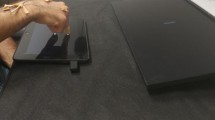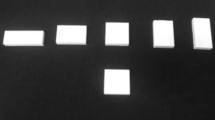Abstract
The goal of the present study was to understand which characteristics (movement time or velocity) of target motion are important in the control and coordination of the transport and grasp-preshape components of prehensile movements during an interception task. Subjects were required to reach toward, grasp and lift an object as it entered a target area. Targets approached along a track at four velocities (500, 750, 1000 and 1250 mm/s) which were presented in two conditions. In the distance-controlled condition, targets moving at all velocities traveled the same distance. In the viewing-time-controlled condition, combinations of velocity and starting distances were performed such that the moving target was visible for 1000 ms for all trials. Analyses of kinematic data revealed that when, target distance was controlled, velocity affected all transport-dependent measures; however, when viewing time was controlled, these dependent measures were no longer affected by target velocity. Thus, the use of velocity information was limited in the viewing-time-controlled condition, and subjects used other information, such as target movement time, when generating the transport component of the prehensile movement. For the grasp-preshape component, both peak aperture and peak-aperture velocity increased as target velocity increased, regardless of condition, indicating that target velocity was used to control the spatial aspects of aperture formation. However, the timing of peak aperture was affected by target velocity in the distance-controlled condition, but not in the viewing-time-controlled condition. These results provide evidence for the autonomous generation of the spatial and temporal aspects of grasp preshape. Thus, an independence between the transport and grasp-preshape phases was found, whereby the use of target velocity as a source of information for generating the transport component was limited; however, target velocity was an important source of information in the grasp-preshape phase.
Similar content being viewed by others
Author information
Authors and Affiliations
Additional information
Received: 16 March 1998 / Accepted: 2 February 1999
Rights and permissions
About this article
Cite this article
Mason, A., Carnahan, H. Target viewing time and velocity effects on prehension. Exp Brain Res 127, 83–94 (1999). https://doi.org/10.1007/s002210050776
Issue Date:
DOI: https://doi.org/10.1007/s002210050776




